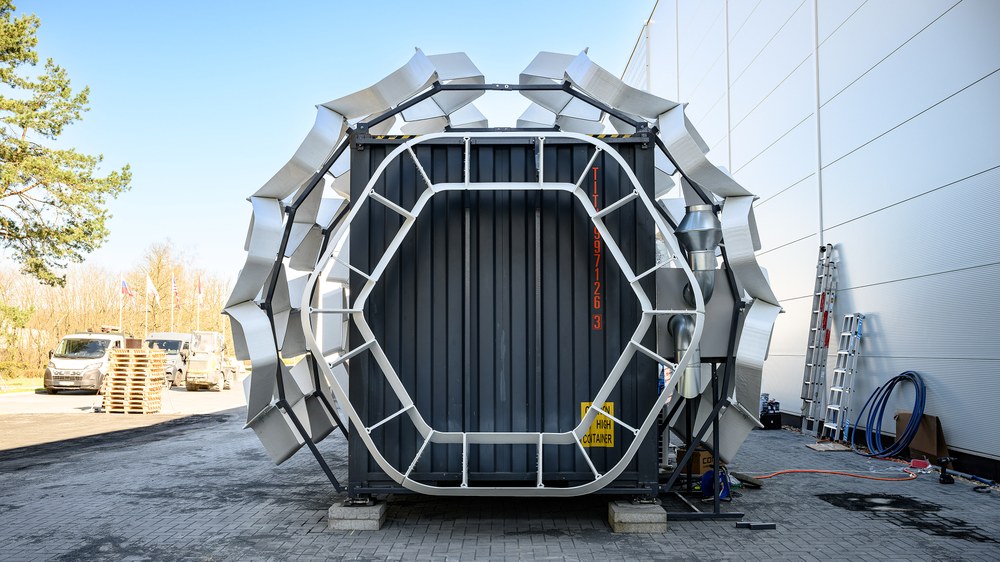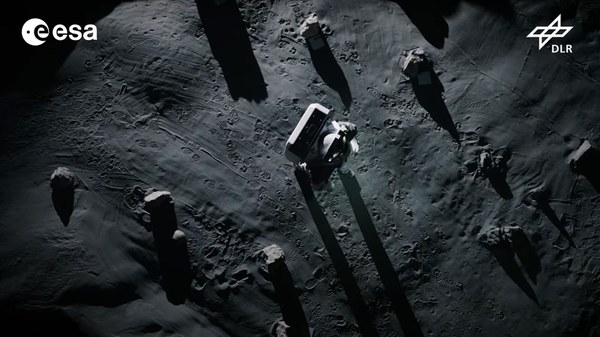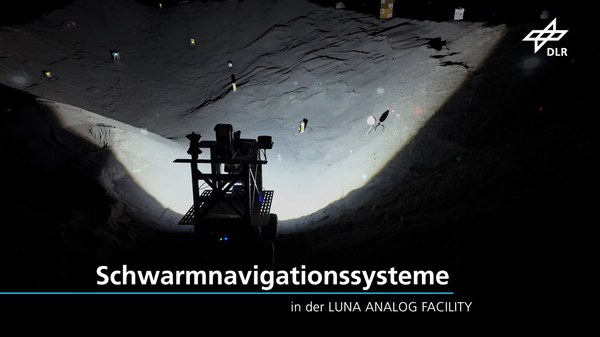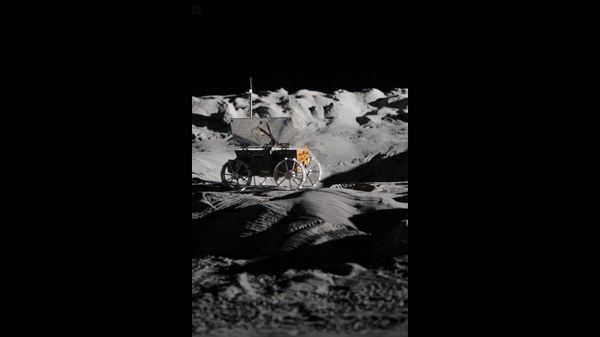The LUNA Moon facility

Welcome to the Moon on Earth! The LUNA hall at DLR's Cologne site was officially opened on 25 September 2024. The facility – the only one of its kind in the world – enables preparations for human and robotic missions to Earth's satellite in a realistic environment. LUNA is jointly operated by the German Aerospace Center (Deutsches Zentrum für Luft- und Raumfahrt; DLR) and the European Space Agency (ESA). The facility is nine metres in height, spans approximately 700 square metres and has an attached technology centre that offers experts from research, industry and start-ups a platform to test and develop their technologies.
LUNA is located near ESA's European Astronaut Centre (EAC) and DLR’s other facilities in Cologne, which brings major advantages. The centre draws upon decades of local experience in planning and conducting robotic and human missions – including control of the Columbus module of the International Space Station ISS, which is operated from the German Space Operations Center (GSOC) in Oberpfaffenhofen.
Hills and craters replicate dusty lunar surface
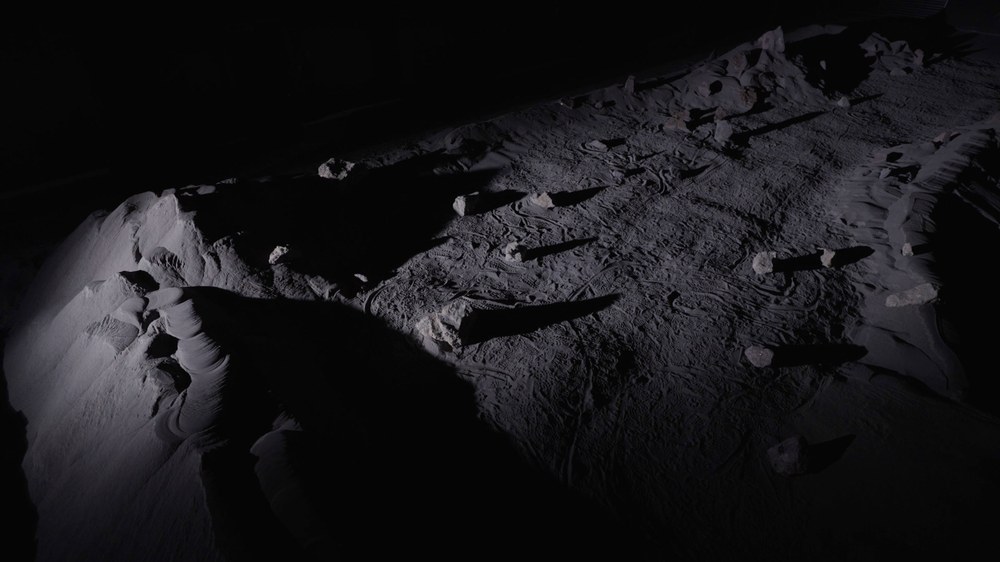
The LUNA hall has been filled with approximately 900 tonnes of regolith to create a lunar-like surface. The material is a fine basalt dust with a grain size and composition specially developed for the facility, very closely mimicking genuine regolith found on the Moon.
Boulders, hills and craters give LUNA's terrain a realistic appearance. Coupled with an adjustable ramp, they serve to test the capabilities of rovers and landers as they are optimised for future missions in the challenging lunar environment.
In one area, the concrete floor of the hall has been sunk to a depth of three metres. This 'deep floor area' has also been filled with simulated lunar regolith and can be used, for example, to place target objects underground – which must then be located by rovers and detection devices. This allows instruments and sensors to be tested for suitability and range.
Sun simulator provides realistic light and shade
Light on the Moon differs significantly to on Earth. There is no scattered light due to its incredibly thin atmosphere – only dazzling brightness or absolute darkness. The transition from one extreme to the other not only causes problems for the human eye but also saturates sensors and lenses of scientific instruments. A Sun simulator in the LUNA hall recreates these conditions, allowing researchers to develop technologies for consistently good visibility during a mission, and to simulate visibility conditions as they may prevail at different latitudes on the Moon.
FLEXhab 'space camping' module

DLR/ESA
Right next to the LUNA hall is a kind of space-camping pod: FLEXhab. Up to four 'LUNA astronauts' can work and live in this space habitat for a limited period of time. Equipped with sleeping cabins, a small kitchen, lounge area, airlock and laboratory area, astronauts' daily routine on a lunar mission can be simulated here.
Together with the flight control team in Oberpfaffenhofen, Germany, crews can prepare and train for lunar excursions – Moonwalks – in the LUNA hall. Afterwards, crew members can analyse collected rock and dust samples in the FLEXhab laboratory. The aim is to simulate a wide variety of mission scenarios with the module and to test and optimise components. The findings will help with the development of actual space habitats.
Experiencing reduced gravity with the gravity off-loading system
Replicating lunar gravity is particularly difficult. On Earth, near-weightlessness for people is only achieved, briefly, on parabolic flights. The LUNA hall has a sophisticated gravity off-loading system that lets astronauts and rovers move as if under lunar gravity. With the help of an overhead suspension system, astronauts and small landers and vehicles are 'off-loaded' to one-sixth of their weight on Earth. The system still allows great freedom of movement, enabling realistic training for the tasks and activities required during a space mission.
EDEN LUNA – a greenhouse on the Moon
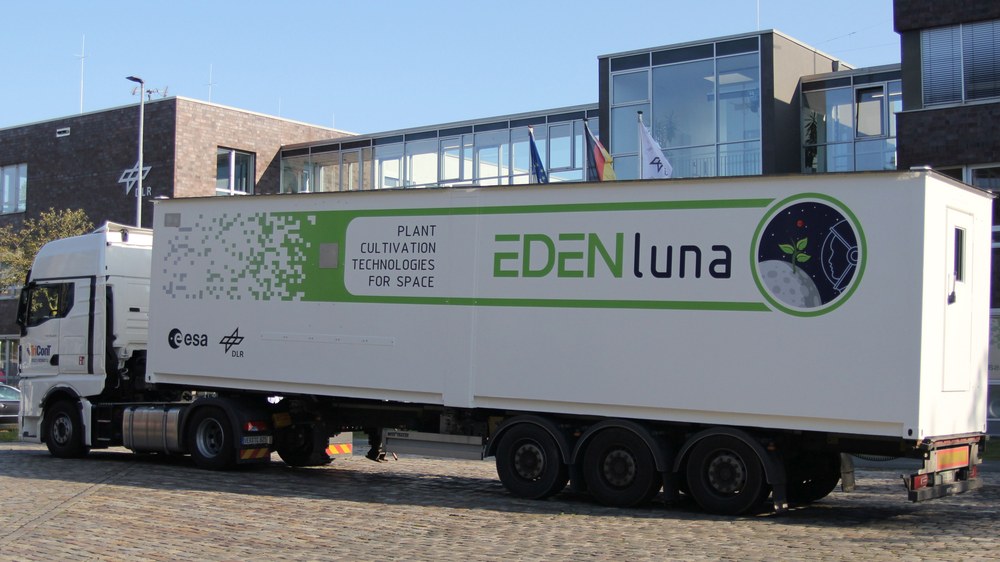
From 2026, the EDEN LUNA greenhouse will be added to the complex – a further development of the EDEN ISS system, which has already been proven in Antarctica. Providing people with fresh food is a major challenge in isolated locations such as Antarctica, as during long-duration missions in space.
Closed bio-regenerative life-support systems like EDEN LUNA could provide a solution. The EDEN LUNA greenhouse will combine such a system with the LUNA facility in Cologne: allowing plants to be grown, automatically cared for, irrigated and ultimately harvested in an isolated environment. Among other things, scientists aim to optimise the nutrient supply system and improve the facility's energy efficiency.


